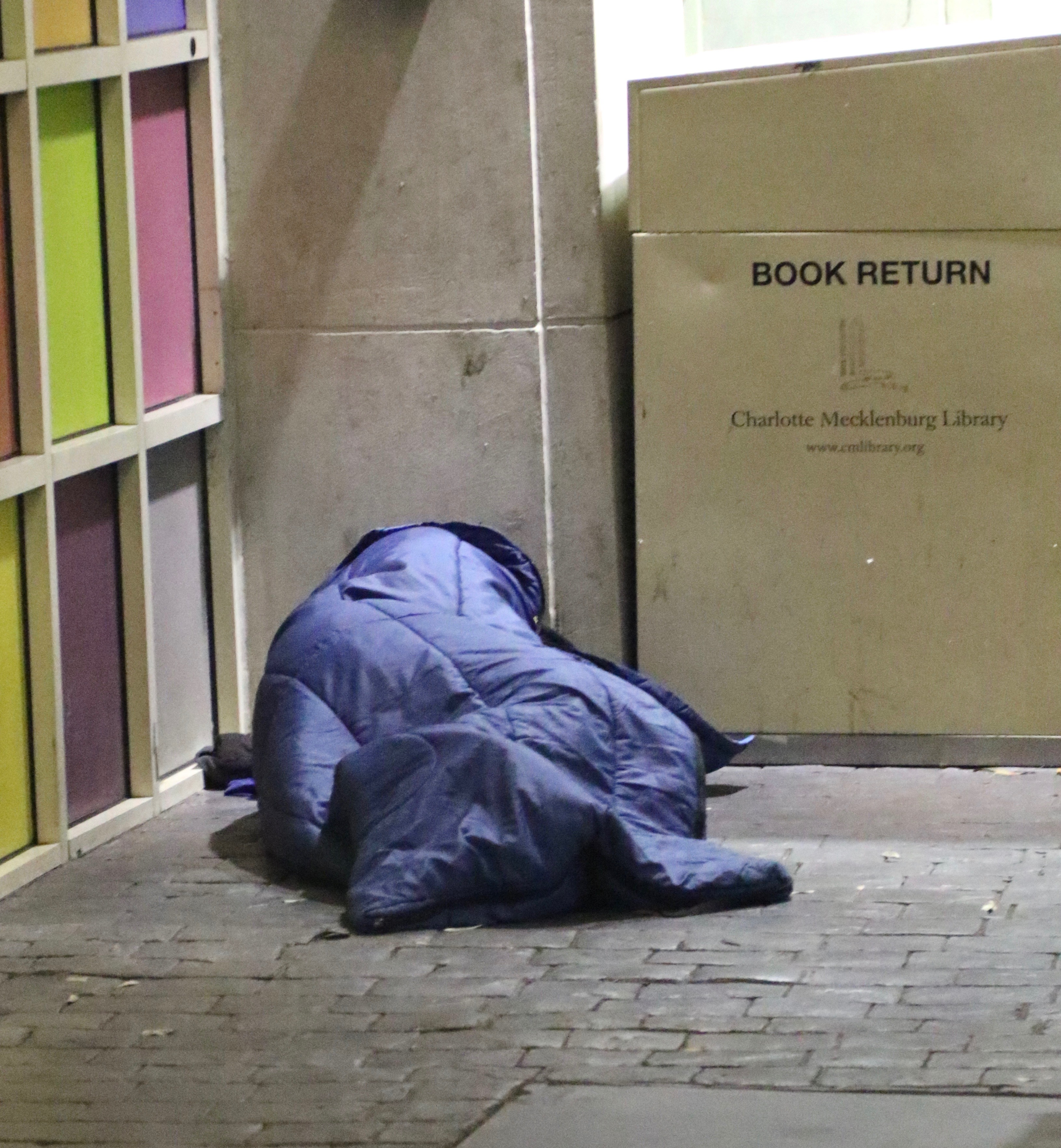HOUSING COUNTS, EVERYBODY COUNTS:
THE 2018 POINT-IN-TIME COUNT

Photo Credit: Peter Safir
The night of the 2018 Point-in-Time Count was January 31. Since January 15, volunteers have been completing surveys with people experiencing homelessness in emergency shelter and transitional housing. On Thursday morning, February 1st, volunteers go out into the streets and camps and other places unfit for human habitation in order to survey people experiencing homelessness outside.
The Point-in-Time Count is more than a one-night snapshot of the number and characteristics of people experiencing homelessness in Charlotte-Mecklenburg. In fact, if the only information we report is whether the number goes up or down, we will miss three important takeaways from this work. Here they are:
TAKEAWAY 1: It’s about Housing
The Point-in-Time Count shows the impact and continued need for affordable housing. The 2017 Point-in-Time Count showed that a 321% increase in investment in permanent housing including rapid re-housing and permanent supportive housing from 2010 to 2017 contributed to the 26% decrease in overall homelessness during a time when Mecklenburg County’s population increased by 17%.
Unsheltered homelessness in Charlotte-Mecklenburg has increased each year since 2014. Several of the areas with the highest counts of unsheltered homelessness nationally are also among the highest cost rental markets – especially along the West Coast. Charlotte-Mecklenburg has only 30 affordable and available units for every 100 households at or below 30% of area median income, which is lower than the national number of 35 units. It is not possible to end and prevent homelessness without housing.
TAKEAWAY 2: Understanding the Barriers is Critical to Creating Solutions
For the first year, volunteers and providers are conducting survey interviews with everyone experiencing homelessness on the night of the Point-in-Time Count. Historically, this survey interview has only been completed with the unsheltered population. Until this year, basic demographic information was submitted for the remaining households in emergency shelter and transitional housing.
Conducting surveys with everyone helps the community to better understand the problem and allows everyone a voice to inform housing solutions. One question asks, “From your perspective, What is your biggest barrier to getting housing?” Another asks, “Has your family been separated because of your homeless episode?” Additional questions ask about income, educational enrollment for youth and length of homelessness. The data collected from these questions will help describe the characteristics of people experiencing homelessness in Charlotte-Mecklenburg and the barriers to access affordable housing.
TAKEAWAY 3: It reminds us WHY
Between January 15 and February 1, over 250 volunteers, staff and other stakeholders will have participated in some way with the 2018 Point-in-Time Count. Some volunteers have stayed for hours past their scheduled shift in order to ensure that every person has an opportunity to complete a survey and be counted.
Because we conduct surveys with everybody experiencing homelessness, which requires a face-to-face conversation, the Point-in-Time Count offers us a reminder that there is a person behind each number. This is important as we consider the weight of the numbers and the implications for decision-making.
SO, WHAT?
We meet people where they are, we ask deeply personal questions, we hear stories of strength and perseverance as well as loss and heartache and we walk away when we’re done.
The Point-in-Time Count can be so much more than a census.
It is an opportunity for us to lift up the voice of each and every person and family that is experiencing homelessness. We can do this by integrating what we learn from individual stories as well as the the data we collect to inform local decision-making around housing and homelessness.
Over the next few months, the Building Bridges Blog will include a series of reflections from 2018 Point-in-Time Count about the barriers related to accessing and sustaining affordable housing. Later in the spring, a full report on overall housing and homelessness will feature the 2018 Point-in-Time Count results.
Courtney Morton coordinates community posts on the Building Bridges Blog. Courtney is the Housing & Homelessness Research Coordinator for Mecklenburg County Community Support Services. Courtney’s job is to connect data on housing instability, homelessness and affordable housing with stakeholders in the community so that they can use it to drive policy-making, funding allocation and programmatic change.

